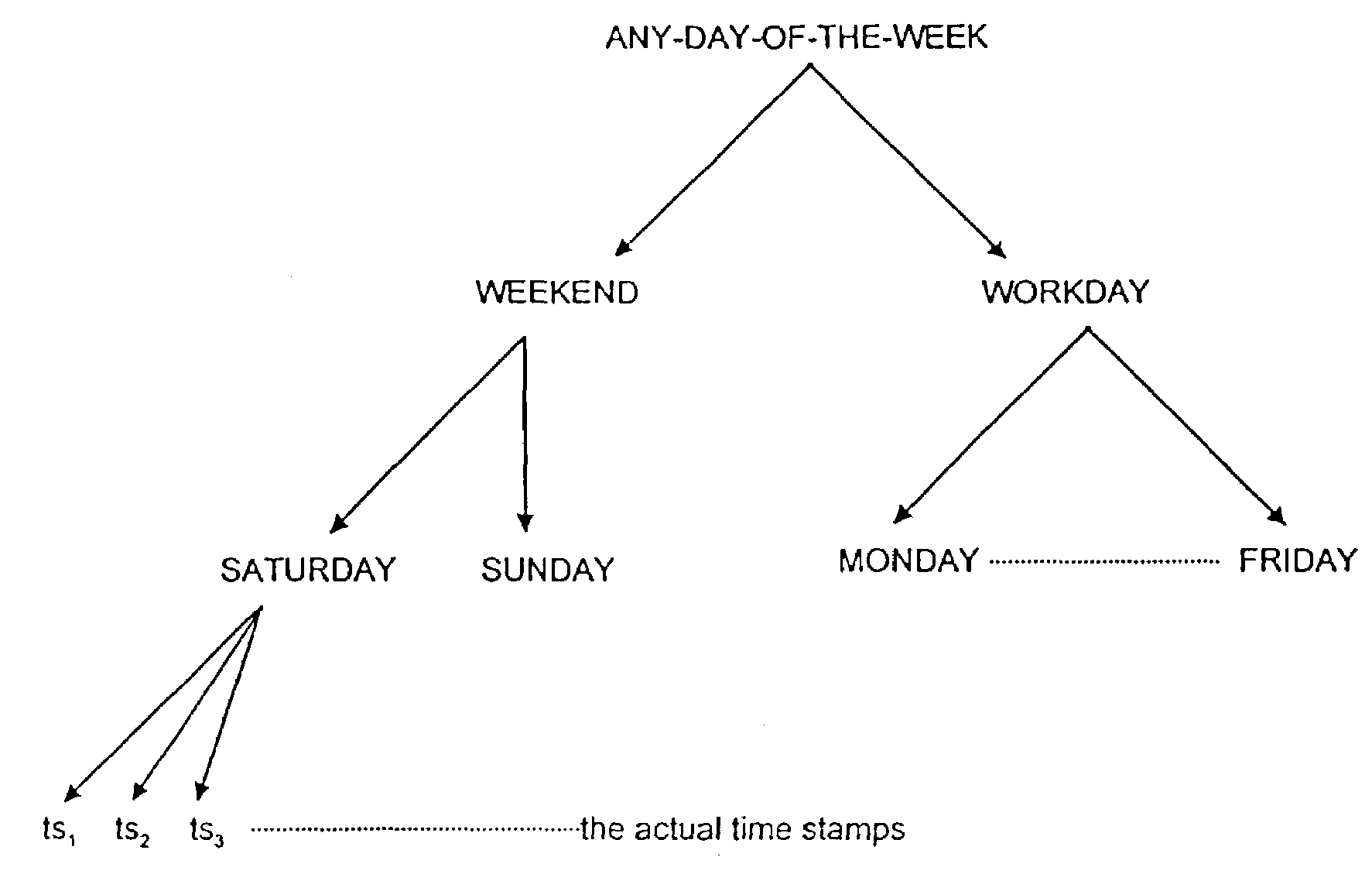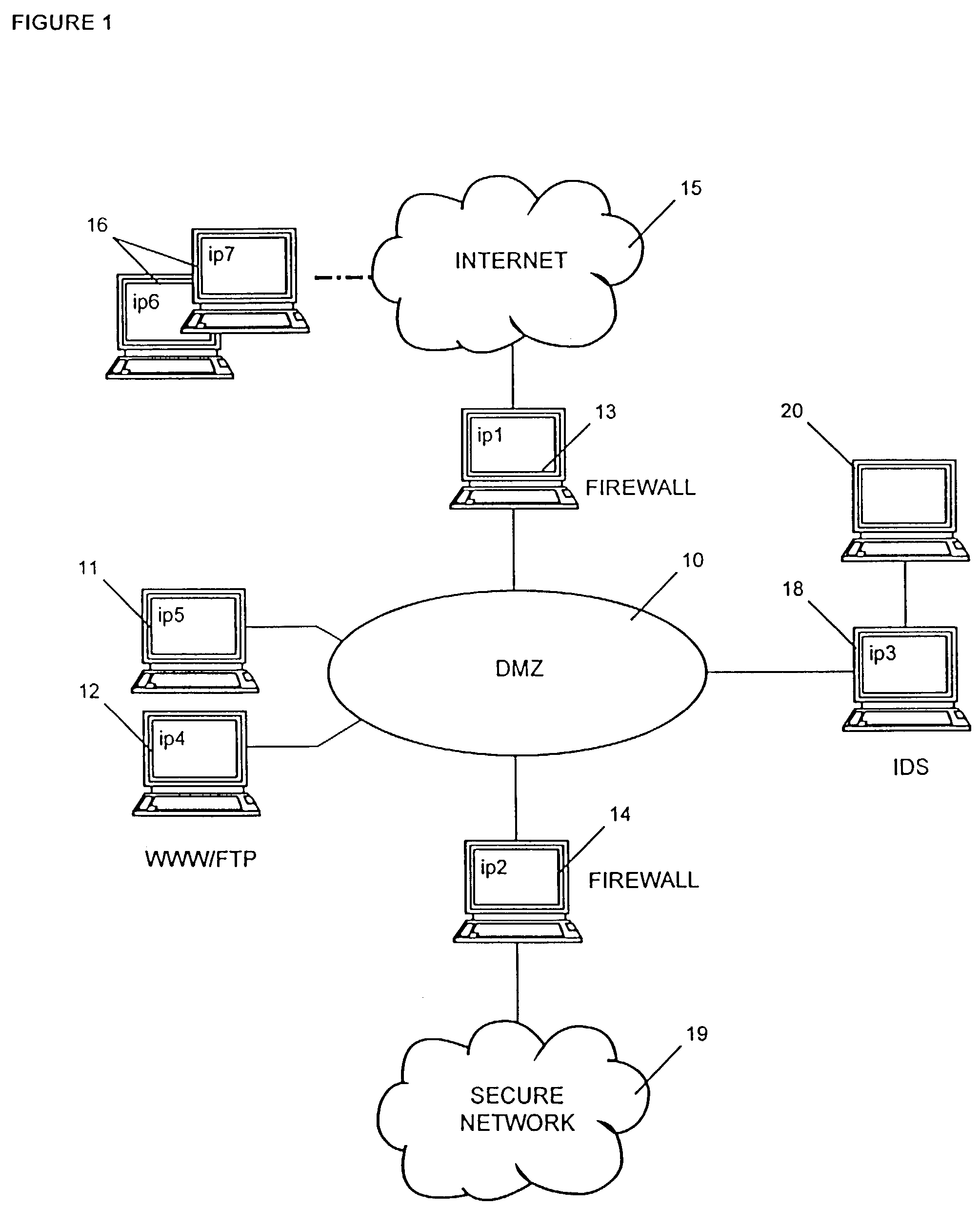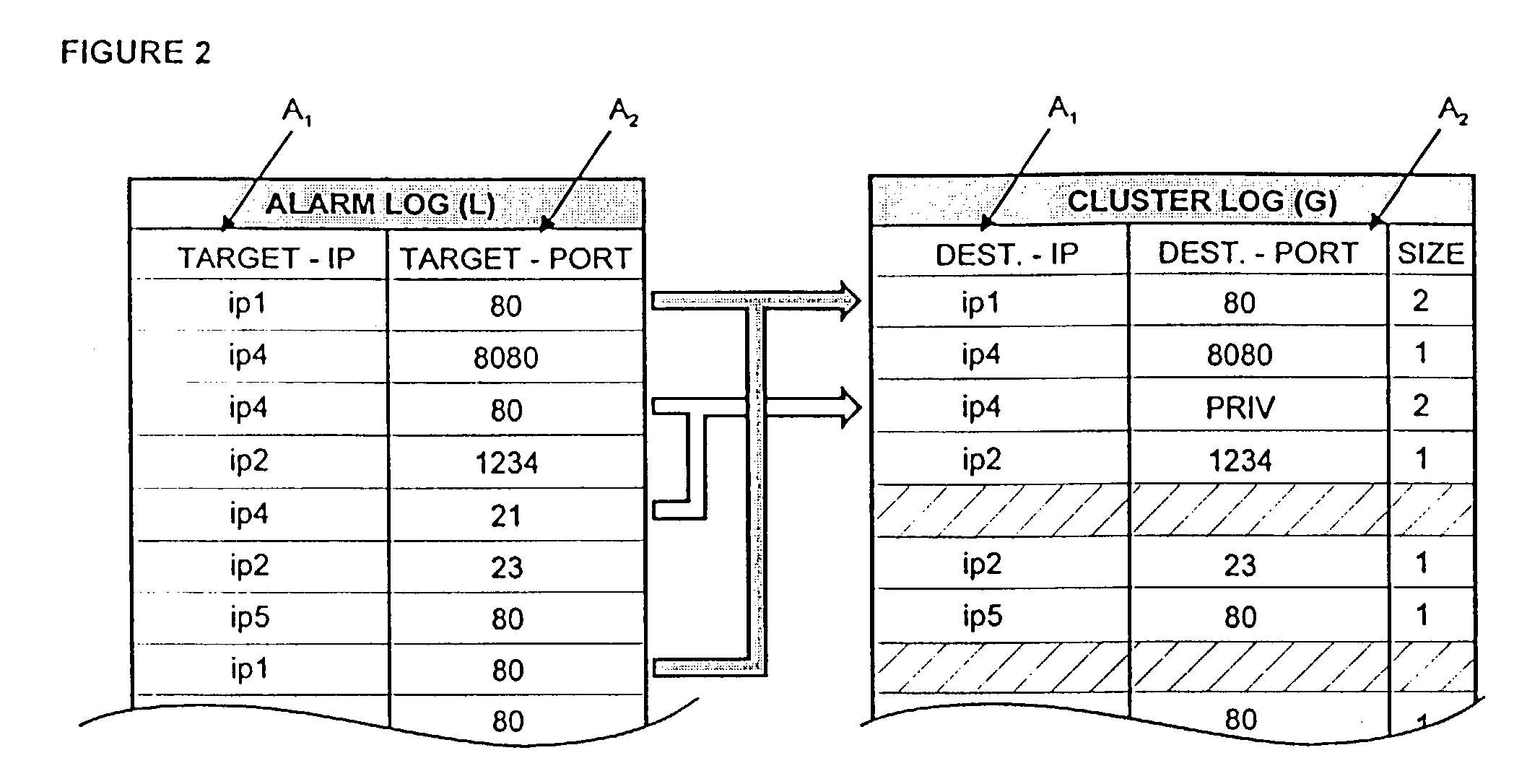Method, computer program element and a system for processing alarms triggered by a monitoring system
a monitoring system and alarm technology, applied in the field of methods, computer program elements and systems for processing alarms triggered by monitoring systems, can solve the problems of large false alarms, inability to detect, and attacks for which signatures or patterns are not stored, and achieve the effect of effective and efficient methods
- Summary
- Abstract
- Description
- Claims
- Application Information
AI Technical Summary
Benefits of technology
Problems solved by technology
Method used
Image
Examples
Embodiment Construction
[0044]FIG. 1 shows a schematic view of a computer network topology comprising firewalls 13, 14 and a demilitarized zone 10, below referred to as DMZ. DMZ is a term often used when describing firewall configurations. The DMZ 10 is an isolated subnet between a secure network 19 and an external network such as the Internet 15. Clients 16 operating in the Internet 15 may access Web servers and other servers 11, 12 in the DMZ 10, which are provided for public access. The servers 11, 12 are protected to some degree by placing an outer firewall 13, often a packet-filtering router, between the Internet 15 and the servers 11, 12 in the DMZ 10. The outer firewall 13 forwards only those requests into the DMZ 10 which are allowed to reach the servers 11, 12. Further the outer firewall 13 could also be configured to block denial-of-service attacks and to perform network address translation for the servers 11, 12 in the DMZ 10. The inner firewall 14 is designed to prevent unauthorized access to t...
PUM
 Login to View More
Login to View More Abstract
Description
Claims
Application Information
 Login to View More
Login to View More - R&D
- Intellectual Property
- Life Sciences
- Materials
- Tech Scout
- Unparalleled Data Quality
- Higher Quality Content
- 60% Fewer Hallucinations
Browse by: Latest US Patents, China's latest patents, Technical Efficacy Thesaurus, Application Domain, Technology Topic, Popular Technical Reports.
© 2025 PatSnap. All rights reserved.Legal|Privacy policy|Modern Slavery Act Transparency Statement|Sitemap|About US| Contact US: help@patsnap.com



